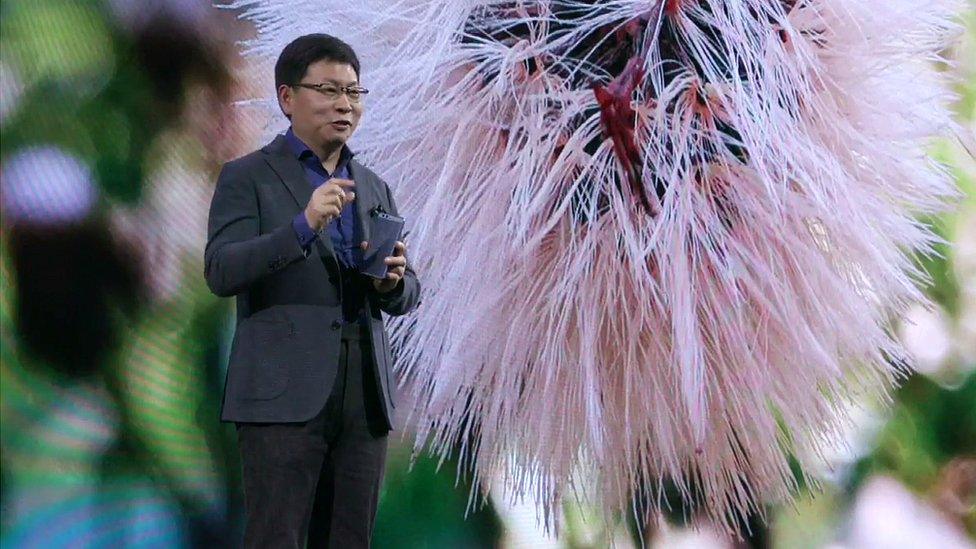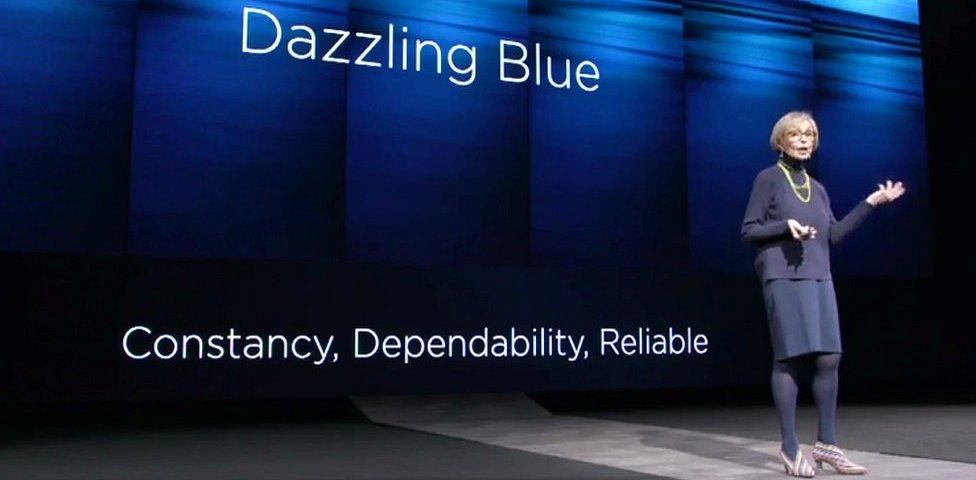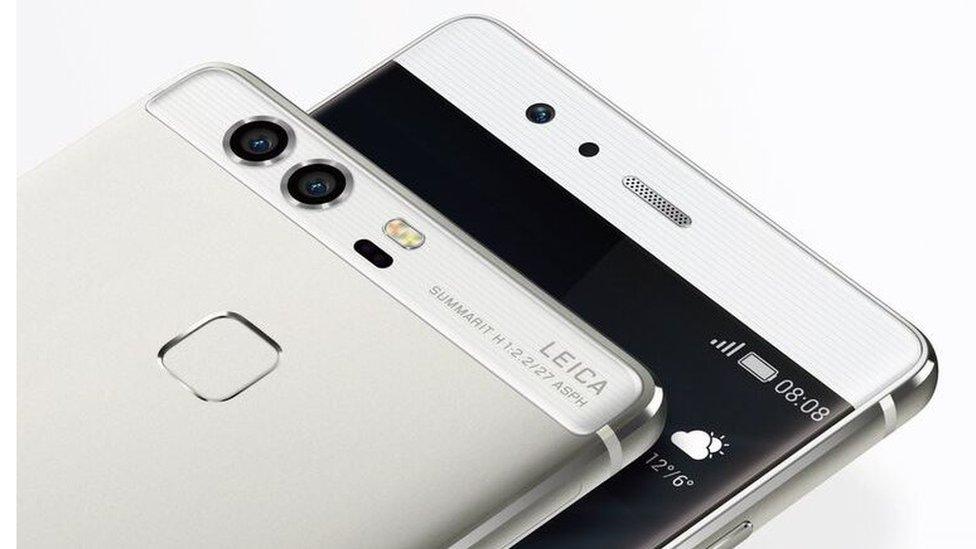MWC 2017: Huawei P10 has smarter selfie and rear cameras
- Published

Chinese tech giant Huawei unveiled two new phones at a Mobile World Congress press event
Huawei's latest high-end smartphone features a camera on its front that counts how many people are in shot.
If the P10 detects there is more than one person being photographed in a "selfie", it automatically switches from standard to wide-angle mode.
The phone's rear cameras also use use 3D depth-sensing technology to help enhance portraits.
Analysts said the device only marks a relatively minor improvement on last year's well-received model.
It was unveiled on the eve of Mobile World Congress, a tech trade show in Barcelona.
"I think it's deliberately incremental, but I don't think that's a problem," commented Ben Wood from CCS Insight.
"It makes it an even more refined version of the P9, which was a milestone device for Huawei as it took them from being a relative unknown to a player with a credible top-end smartphone."

The phones' dual cameras can work out the size of the subject's facial features
The Chinese firm is currently the world's third bestselling smartphone-maker. It has said it intends to be one of the top two by the end of 2018.
The company shipped more than 139 million handsets last year - according to market analysis by IDC - which represented a 30% gain on 2015.
That put Huawei's share of 2016's smartphone market at 9%, behind Apple with 15% and Samsung with 21%.
Auto-enhanced images
The P10 continues Huawei's alliance with Leica, the German camera-maker whose brand is stamped on the phone's photo sensor components.
As before, there are two of these cameras on the rear of the device, one capturing colour, the other black-and-white data - the information is combined to create a single 12 megapixel colour image or used to deliver a 20 megapixel monochrome one.
What is new, is that software now analyses the difference between the two images to work out the position and size of the subject's various facial features - such as how big a nose they have. This is then used to adjust the lighting, shadows and skin colours to try and produce more flattering portraits.

The P10's improvements over last year's model centre on its photo processing capabilities
In addition, Huawei has built in software co-developed by the action camera-maker GoPro to automatically create photo books and videos.
The firm has also moved the fingerprint sensor from the rear of the device to the front.
The standard P10 has a 5.1in 1080p high definition display, while the P10 Plus has a 5.5in higher resolution component.
The Plus will cost €699 (£590) and up while the standard P10 will sell for €649.
Much of the firm's press conference was dedicated to the fact they now come in blue and green bodies among other options.
"If you saw it against the P9 you might think: what's the difference?" commented David McQueen from ABI Research.
"What Huawei has done is really push the camera features and functionality.
"That will appeal to keen photographers, but others won't notice much improvement."

Analysis: Chris Foxx, Technology reporter

Phone-makers usually take to the stage at Mobile World Congress to explain the new features of their latest handset in a glitzy no-expense-spared presentation.
Huawei certainly didn't scrimp on the venue or staging. Strange, then, that it spent the first 25 minutes talking about colours. In unparalleled detail.
Did you know for example that the colour blue symbolises "constancy", because the sky has not fallen and it is blue. Except of course when it is orange, or red. Or black.
The in-depth colour briefing was more suited to a private internal design meeting at Huawei, rather than being broadcast to the world's press.
As the speaker announced the conclusion of her speech about the colour blue, a few savage cheers rang out in the auditorium.
But at least it got the message across. The phone is now a bit better than last year, and comes in blue.
- Published6 April 2016
